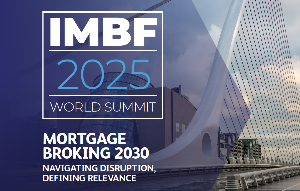
But she doesn’t think the current government will be brave enough to make these changes which, she believes, are needed for KiwiSaver to remain fit-for-purpose over the net 30 years.
Wrightson thinks, however, that “a government-in-waiting” might be persuaded. And she is urging the financial services sector to collaborate with the Retirement Commission and put some proposals to the current government.
“There’s a really good opportunity at the moment for the industry,” she says. The government’s planned review of KiwiSaver has been stalled because of Covid-19 and other priorities, meaning there’s a small window of opportunity for the industry to agree on improvements and get them in front of the minister. But with an election looming next year, “there’s only a limited time before this door shuts”.
Wrightson’s comments came during a panel discussion on what KiwiSaver might look like in 2050 at the Financial Services Council’s annual conference in Auckland last week.
Wrightson said the FSC’s own research showed 78% of New Zealanders support compulsory contributions to KiwiSaver. But what can be done about those who genuinely can’t afford it – about 20% of the eligible population?
“The trouble is that question often dominates the discussion,” she said. “We may need to carve them out but for the vast majority of people, it’s doable.
“I know the problems, there would have to be a floor below which you wouldn’t require it because we are still a low-wage economy. But if you look at us compared with Australia, it’s just a no brainer.”
KiwiWealth chief executive Rhiannon McKinnon suggests a staggered approach, where those struggling to save start contributing 1% of their income to KiwiSaver, with the contribution level rising over time.
Another way, Wrightson says, is for compulsion to apply only for those joining the workforce for the first time.
But she believes a rebranding is needed. “I don’t think people see KiwiSaver as a retirement plan. They see it as a savings plan,” she says. That became very clear during lockdown when applications for hardship withdrawals rose sharply. “And as the amount gets bigger it becomes more and more tempting to put the hand in the lolly jar.”
More research is also needed on first-home buyers and whether they continuing to contribute to KiwiSaver after making a withdrawal to fund their house deposit, she says.
“We don’t have enough data. Do they contribute the same or better or do they focus on the mortgage? We don’t have enough knowledge about behaviour which is something the commission will be looking at a bit harder in the next year.”
University of Auckland Associate Professor of Economics Susan St John said she supported Wrightson on compulsion. KiwiSaver “works brilliantly” and had been well-branded to the point where everyone was aware of the scheme. But it has a fundamental weakness: it is based on the male model of a traditional, unbroken 40-year career in fulltime, paid work which doesn’t suit most women “and doesn’t suit many men well, either”.
She and McKinnon said there was now a greater consciousness about gender issues and KiwiSaver, particularly among women themselves.
St John would like to see the employer contribution, currently 3%, paid to employees regardless of whether they were contributing to KiwiSaver. Women are badly disadvantaged because they are missing out for the 10-20 years they were absent from the paid workforce raising children.
“We can do something about that if we think about it carefully enough,” she said.
“We have to recognise that KiwiSaver is an upper-income program that has suited the Pakeha population and we need also to pay attention to those who lose work later in life through no fault of their own. They get a very insignificant benefit and find their position eroded by the time they get to retirement.”
Westpac Head of Investments Nigel Jackson says part of the problem is that nobody within government is responsible for KiwiSaver, meaning there is no accountability to ensure it meets its objectives. The industry needs to start influencing the policy debate in four key areas: participation, contribution, access and withdrawals, and investment risk, he says.




Comments
No comments yet.
Sign In to add your comment